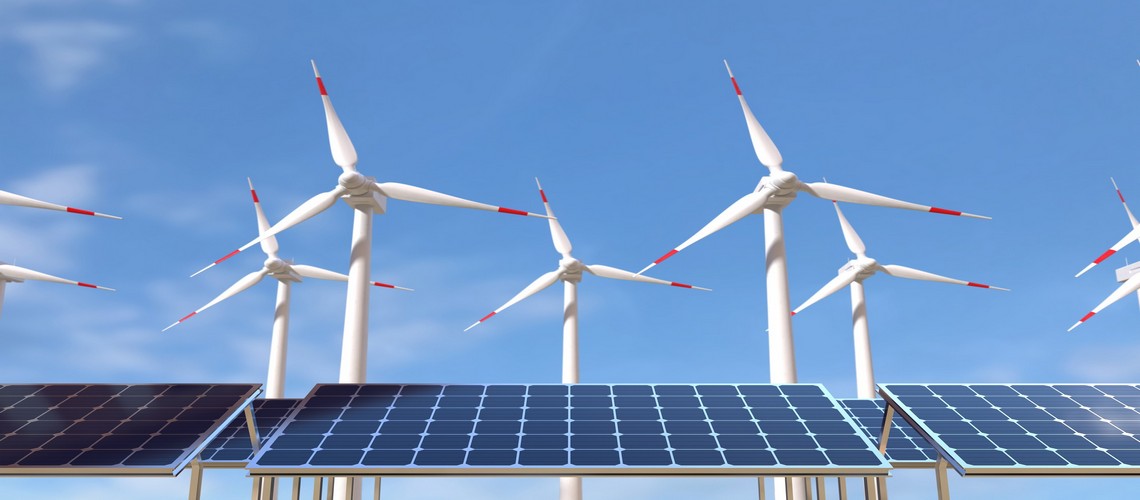Hybrid Renewable Energy Systems: The Future of Sustainable Power Generation

When it comes to renewable energy, we instantly think of sprawling solar parks and massive wind turbines. As sunlight hits the solar panels and charges them up, wind gets the turbines up and running. While it sounds seamless, both solar and wind energy are riddled with intermittency challenges. They can only generate electricity when the sun is shining or the wind is blowing. So, how do we ensure a reliable supply of renewable energy?
That’s where hybrid renewable energy systems come in. Hybrid systems combine solar, wind, hydro, and even bioenergy with battery storage and backup generators to provide uninterrupted power. Key to the renewable energy revolution that has gripped the world, hybrid energy systems help reduce dependency on fossil fuels and achieve carbon-neutral footprints. So, let’s explore how these systems work, their benefits, and why they are the future of renewable energy.
What are Hybrid Renewable Energy Systems?
A hybrid renewable energy system combines multiple sources of green energy to ensure a stable, uninterrupted power supply. Unlike standalone renewable systems such as solar panels or wind turbines that are weather-dependent, hybrid systems use complementary sources to maintain energy flow. For example:
Solar and wind hybrid systems: While solar power electrifies during the day, wind turbines can generate power at night.
Hydro and biomass integration: Where water sources are available, small-scale hydro can supplement biomass energy for round-the-clock power generation.
Battery storage and smart grids: Excess power generated during peak conditions can be stored for later use in batteries, ensuring seamless power even in extreme weather conditions.
These hybrid energy systems allow for green energy to be utilised optimally while reducing costs and environmental impact. You’ll be glad to know that Jindal India Renewable Energy Limited is also investing in hybrid renewable energy systems to facilitate the wide adoption of clean energy in the country.
Key Benefits of Hybrid Renewable Energy Systems
1. Reliable and Consistent Power Supply
One of the biggest challenges with renewable energy is its dependency on nature. For instance, solar panels don’t work at night and wind turbines slow down when there’s no breeze. A hybrid system solves this by combining different sources, ensuring a steady electricity supply 24/7.
2. Maximised Energy Efficiency
Hybrid systems make the most of available resources by balancing multiple energy sources. If there’s plenty of green solar energy in India prioritises solar. When the sun sets, wind or battery storage takes over. This smart energy management reduces waste and ensures power is always available.
3. Lower Energy Costs in the Long Run
While setting up a hybrid renewable system requires an initial investment, the long-term benefits far outweigh the costs. With solar and wind energy, you’re generating power for free after installation. Plus, Jindal India Renewable Energy Limited and other players in the sector aim to bring down setup costs with innovative solutions, making clean energy affordable for businesses and households alike.
4. Reduced Carbon Footprint for a Sustainable Future
Hybrid renewable energy systems significantly cut down carbon emissions by replacing fossil fuels with clean energy sources. With India pushing for a greener economy, investing in green energy can help individuals and businesses contribute to a sustainable future while also complying with eco-friendly regulations. It’s a win-win for both the planet and energy consumers!
5. Smart Grid Integration and Battery Storage Benefits
Hybrid energy systems work well with battery storage and smart grids, allowing excess energy to be stored and used when needed. This helps stabilise power grids, especially in areas with fluctuating demand. At Jindal India Renewable Energy Limited, we’re also investing in battery energy storage systems to complement hybrid systems and ensure that energy is used efficiently across cities and industries.
The Future is Hybrid
Countries across the globe are collectively striving for a sustainable future and hybrid renewable energy systems are proving to be the key to overcoming the challenges of green energy sources. By combining solar, wind, hydro and battery storage, these systems offer a reliable, cost-effective, and eco-friendly way to power homes, industries, and entire cities. These hybrid systems will continue to evolve to usher in a future where clean energy isn’t just an option but the norm.